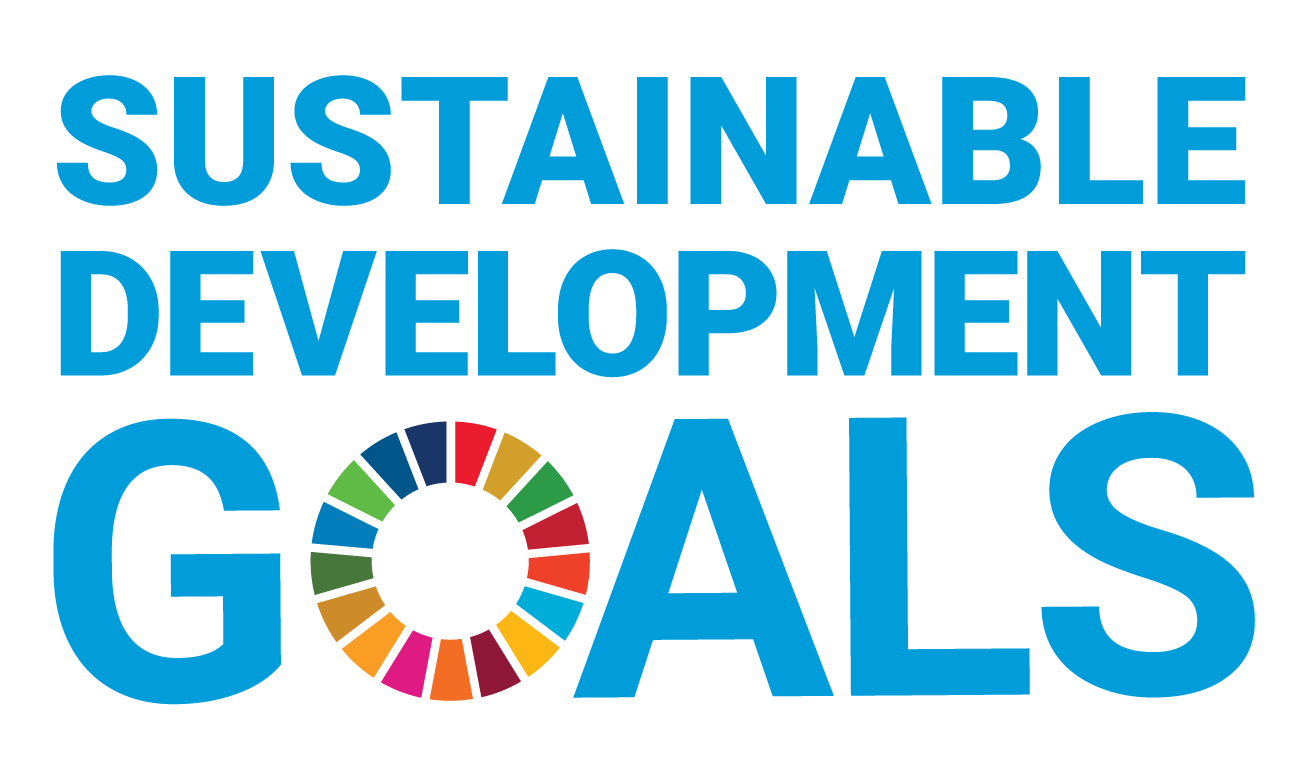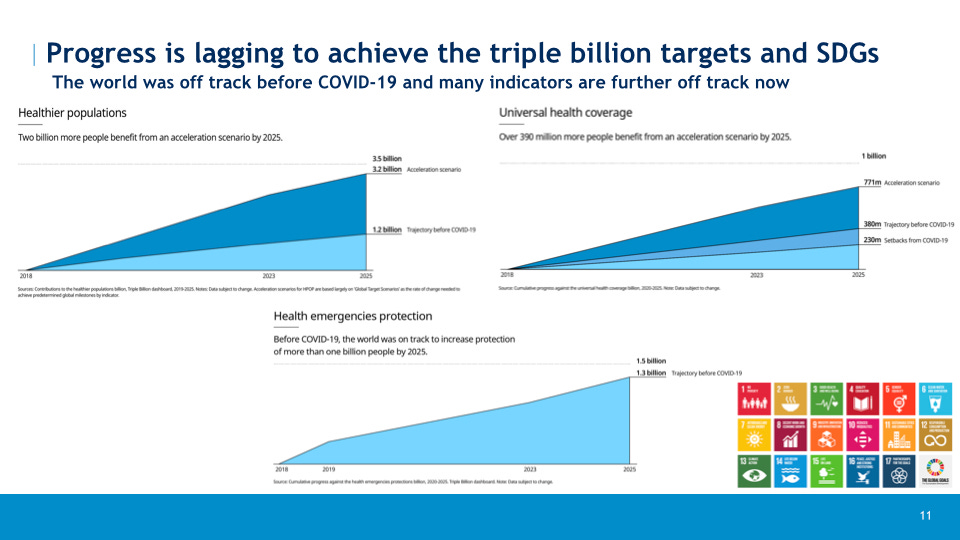Speeding up the Sustainable Development Goals
Part 1: Powering progress
“Halfway to 2030, we are far off track.”
The 17 Sustainable Development Goals (SDGs), adopted by all UN Member States in 2015, to be achieved by 2030, are “a shared blueprint for peace and prosperity for people and the planet.”
If your eyes are glazing over already, please realize that reaching the SDGs is about saving lives of people who don’t have to die. Saving (and improving) as many lives as possible is the most exciting thing any of us can do. As I said in an earlier blog, I would encourage you to think about your career as the contribution you make to the well-being of others. (I address the communication challenge of the SDGs below.)
When you hear ‘SDGs’, conjure up in your mind the image of a person you personally know who died, who didn’t have to die. SDGs are about saving the life of that person.
Everyone has a role in reaching the SDGs, especially you. This is why I started my blog with a series on career advice for young (and not so young) people. The overarching message was: find a problem and solve it. My hope is that reflecting on how to speed up the SDGs will help you find an even more important problem and solve it, and make an even greater contribution.
From measuring to managing SDGs
The SDGs are commitments by governments. International organizations like WHO help countries to reach them. Leadership by national governments, working with other sectors, is the key factor.
The SDGs are universal, meaning they apply to all countries. This is good because they don’t split the world into rich and poor countries, or us and them. They are also strongly focused on gender equality, equity, and human rights, with their motto of ‘leave no one behind.’ This is good because those who are furthest behind need, deserve, and will benefit most from support.
Health is well represented in the SDGs. The original SDG framework included 17 goals, 169 targets, and 232 (or 231 but who is counting!) unique indicators, of which 12 goals, 33 targets, and 57 indicators have been identified as health related SDGs.
The SDGs are meant to be inter-connected and indeed not all the health related indicators are in SDG 3 on good health and well being. For example, in WHO’s Results Framework, about 2/3 of the health related SDG indicators are within SDG 3, and 1/3 are in other goals that affect health.
In 2017, as Dr Tedros took office, he wanted to focus WHO squarely on measurable impact in countries.
In developing the strategy, we realized you can measure 50+ indicators but you can’t manage that many. If you’re an individual or organization, you can pick one to focus on. If you’re a country, you can pick a few most off track to focus on. If you’re WHO whose mission is “to promote health, keep the world safe, and serve the vulnerable”, you need to cluster them.
We realized you can’t develop a strategy around 50+ concepts, so we boiled it down to three — the triple billion targets of healthier populations, universal health coverage, and health emergencies.
We created the SDG-based “triple billion targets” to simplify things into three core concepts:
healthier populations (mostly factors outside SDG3 which affect health such as climate and air pollution, water and sanitation, food and nutrition, education, gender equality),
universal health coverage (access to essential services with financial protection), and
health emergencies (including prevention, preparedness, and response).
In approving the strategy (known as the Thirteenth General Programme of Work!), Member States set a target of reaching 1 billion people on each of these within 5 years (by 2023, later extended to 2025).
In 2023, we are at the mid-point of the SDGs and, to put it mildly, things are not going well, not only in health but also across the global goals. The UN Secretary-General has said we need to “rescue” the SDGs. In September, the UN General Assembly will convene an SDG Summit to “carry out a comprehensive review of the state of the SDGs, respond to the impact of multiple and interlocking crises facing the world, and provide high-level political guidance on transformative and accelerated actions leading up to the target year of 2030 for achieving the SDGs.”
Lagging health-related SDGs
The health related SDGs are far off target. For healthier populations, the billion target will be reached, but we now know that many more people would need to be reached to stay on track for the SDGs. For UHC, initial estimates show that only 230 million people are expected to benefit, so we are going at less than 1/4 the pace needed to achieve the 2030 target. For health emergencies protection, although the billion target will be met, COVID-19 showed us no country was fully prepared.
The 2022 Goalkeepers report reached a similar conclusion:
As it stands now, we’d need to speed up the pace of our progress five times faster to meet most of our goals—and even that might be an underestimate, because some of the projections don’t yet account for the impact of the pandemic, let alone the war in Ukraine or the food crisis it kicked off in Africa.
Specific SDG targets and indicators show the same worrisome pattern. Since 2015, maternal deaths have stagnated or increased. Gains in child mortality have reduced significantly and 54 countries are projected to fall short of meeting their 2030 SDG target. Malaria deaths stabilized in 2021, but were higher in 2020 compared to before the pandemic. Tuberculosis deaths and disease increased during the COVID-19 pandemic. In 2021, a record high of nearly 40 million children missed a measles vaccine dose. Described as “staggering backsliding,” an estimated 25 million children were un- or under-vaccinated in 2021 – 6 million more than in 2019.
Later this year, the World Health Statistics and UHC global monitoring reports will provide further detail on how far behind we are on the health related SDGs and “triple billion targets,” as the full effect of the COVID-19 pandemic is factored in.
Speeding up SDGs
The key question is not only how far behind we are on the SDGs but also what are we going to do about it?
How would you speed up the SDGs? To address this question in health, WHO has developed a 5P strategy — promote, provide, protect, power, and perform for health:
The first three Ps — promote, provide, and protect — are based on the triple billion targets and represent the usual and necessary content-based approaches to these topics. Promote recognizes the need for multi-sectoral action on root causes. Provide underlines the importance of Primary Health Care. Protect is about health emergencies preparedness and response. The 5th P, performing for health, is about improving WHO itself as an organization.
Like any good sports team, we need to play both a strong offense and defense in health.
I want to focus on the 4th P, powering health, because it addresses directly the question of how we can speed up the SDGs beyond ‘business as usual.’ Powering health is also the least understood.
If the first 3 Ps are about content, powering health is about the methods of SDG acceleration. If the first 3 Ps are about important but incremental change, powering health is about systematic and quantum change.
I can think of only three technical ways to speed up SDG progress: data and delivery for impact; innovation, and partnerships. Digital cuts across these, as does science, and finance is needed to drive them. There are additional ways that involve political support and advocacy. And of course, gender equality, equity, and human rights should be central to all that we do.
Powering health is about disrupting systems of data and delivery, innovation, and partnerships, and then improving them. It’s about doing experiments in these areas and then taking them to scale.
What is needed to accelerate SDG progress are specific initiatives, tested and scaled, that disrupt and improve the systems behind data and delivery for impact , innovation, and partnerships.
Although the 5Ps are WHO’s strategy, WHO is so fundamental to global health that they also represent an approach to the field more generally. Moreover, because the ‘power’ approaches are not content-specific, they could be helpful across all the SDGs.
How do you think the SDGs can be sped up?
SDG challenges
Before turning in subsequent blogs in this series to the strategies to speed them up, let me offer some personal opinions about the challenges of implementing the SDGs.
Eyes glaze over. For some, the SDGs are an abstract concept and some might consider them UN-speak. When I wrote to a dear friend and brilliant strategic comms mind, John Butler, about this series, he said “people turn off when you talk about the SDGs — make it about people and what happening in the world. There’s a reason journalists don’t write about [SDGs].” I agree. Certainly in telling our story, let’s follow his advice.
Not enough data. One of the lessons I learned in developing WHO strategy is that everyone wants to talk about indicators, especially at global level, but countries care about, and wish to improve, data systems. Like the inebriated person looking for his keys under the lamp-post rather than where he dropped them, indicators can skew what we focus on. For example, despite the crisis in mental health, there is no indicator for mental health service delivery because there is not enough data. Moreover, 40% of the world’s deaths remain unregistered and only 60% of countries have good capacity to review progress and performance of their health sectors.
Too many indicators. As Emperor Joseph II said: “Too many notes, dear Mozart, too many notes.” I already told the story about how we clustered for purposes of strategy 50+ health related SDG indicators into three concepts (healthier populations, UHC, and health emergencies). For UHC a measurement index existed but we combined access to essential services with financial hardship to create a single result. For healthier populations, no index existed so we created one. For health emergencies, we also created an index but realized during the pandemic that the more traditional static measures of capacity did not predict outcomes so we are working on improving them. For all three, we expressed results in the same intuitive form of number of people rather than percent on an abstract scale.
Targets are political. As the saying goes, indicators are technical, targets are political. There is always a trade-off in setting them between wanting ambitious targets to drive change and realistic ones that can be met. Moreover, in contrast to entrepreneurs, bureaucracies and governments resist frequent change, often for good reason, so once decided it’s hard to improve targets (and measurement methods) for a long time.
Not enough money. This challenge is well recognized in the approach to the SDG summit. Very recently, the UN Secretary-General issued this call to action: “The high cost of debt and increasing risks of debt distress demand decisive action to make at least $500 billion dollars available annually to developing countries and convert short term lending into long term debt at lower interest rates.”
Meet Samira
In this series on speeding up SDGs, I will narrate my experiences, share my opinions, and present what I have learned throughout my career including during the past six years since coming to WHO with my brother Dr Tedros.
The ideas have been shaped and often co-created by terrific colleagues, and in each of these blogs I want to introduce you to, and pay tribute to, them.
Beyond the leadership of Dr Tedros, no one has been a fellow traveler along the path of WHO strategy more than my wonderful colleague Samira Asma, WHO Assistant Director General, Data and Delivery for Impact.
In the rest of this series, I will explore powering SDG progress through data and delivery for impact, innovation, and partnership in greater detail. In discussing these, one of my key goals is to help you find a problem and solve it.
The SDGs are only as useful as the people dedicated to solving them!






I seek opportunity to discuss on SDG 3, Good Health & Wellbeing and for reaching out to the last person of the world for his / her healthcare needs.